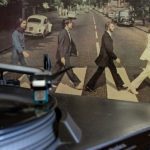 Animals
Animals  Animals
Animals  Weird Stuff
Weird Stuff 10 Weird Things People Used to Do at New Year’s
 Our World
Our World 10 Archaeological Discoveries of 2025 That Refined History
 Weird Stuff
Weird Stuff 10 Fascinating Facts You Might Not Know About Snow
 Miscellaneous
Miscellaneous Top 10 Things Crypto Was Supposed to Change & What Actually Did
 History
History 10 Huge Historical Events That Happened on Christmas Eve
 Music
Music 10 Surprising Origin Stories of Your Favorite Holiday Songs
 History
History 10 Less Than Jolly Events That Occurred on December 25
 Weird Stuff
Weird Stuff 10 Funny Ways That Researchers Overthink Christmas
 Politics
Politics 10 Political Scandals That Sent Crowds Into the Streets
 Animals
Animals 10 Species That Refused to Go Extinct
 Weird Stuff
Weird Stuff 10 Weird Things People Used to Do at New Year’s
 Our World
Our World 10 Archaeological Discoveries of 2025 That Refined History
Who's Behind Listverse?

Jamie Frater
Head Editor
Jamie founded Listverse due to an insatiable desire to share fascinating, obscure, and bizarre facts. He has been a guest speaker on numerous national radio and television stations and is a five time published author.
More About Us Weird Stuff
Weird Stuff 10 Fascinating Facts You Might Not Know About Snow
 Miscellaneous
Miscellaneous Top 10 Things Crypto Was Supposed to Change & What Actually Did
 History
History 10 Huge Historical Events That Happened on Christmas Eve
 Music
Music 10 Surprising Origin Stories of Your Favorite Holiday Songs
 History
History 10 Less Than Jolly Events That Occurred on December 25
 Weird Stuff
Weird Stuff 10 Funny Ways That Researchers Overthink Christmas
 Politics
Politics 10 Political Scandals That Sent Crowds Into the Streets
10 Things We’re Just Now Learning About The Human Body
We expect to find a lot of groundbreaking new information in the depths of the ocean or the farthest reaches of space. We assume we’re pretty familiar with the human body. However, there are a lot of things that we’re just now learning about ourselves.
10How The Brain Categorizes Information
Information and knowledge is stored in the brain. We’ve known that for a long time. But we haven’t necessarily known how it all works. With the advent of brain scans, we were able to see which parts of the brain become active when exposed to certain stimuli. This includes seeing what activates when we look at cat videos online or where electrical impulses appear when we’re asked to finish a crossword puzzle. But just how knowledge is arranged was somewhat of a mystery until one woman forgot the names of animals.
The patient—called J.B.R. to protect her privacy—was suffering from herpes simplex encephalitis. One of the bizarre effects of the disease included semantic category-specific memory issues—a fancy way of saying that she could no longer remember the names of animals. When tested, she was able to recognize and name only 2 out of 48 living creatures, but her knowledge of non-living things remained intact. Other patients also suffering from the same disease had similar category-specific memory loss, but the categories weren’t always the same. Interestingly, most of them had greater difficulty with living things as opposed to non-living things. Others forgot the names of vegetables, plants, or insects, but could still identify trucks and briefcases.
Some patients’ knowledge of a particular category was completely lost. When researchers showed them a sketch, one patient had no idea if there really was such a thing as fantastical, chimeric, hybrid animals like polar bears with horse heads.
We now have a better understanding of how the brain categorizes information. It’s kind of like a filing cabinet. Similar groups of information are stored in the same area of the brain; we have categories for foods, geographical locations, animals, and even friends and family. Damage to the temporal lobe can knock out one of these categories but leave the others intact. In some cases, disease can move through the brain and knock out one category after another, making it progressively harder for a person to remember information in a category. People with semantic dementia lose bits of knowledge in specific categories gradually yet remain perfectly cognizant in other areas.
9A New Layer In The Human Eye
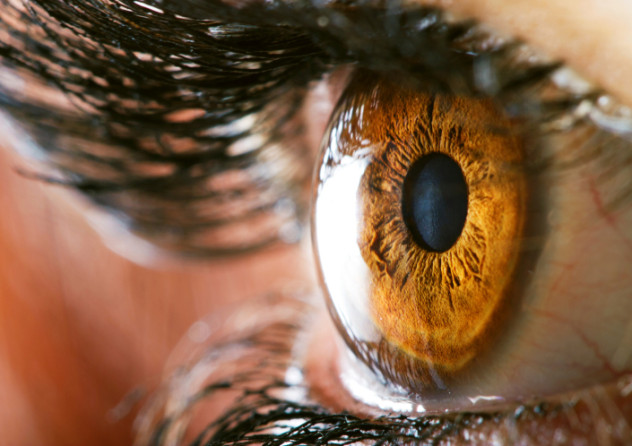
Doctors and scientists get a bit of a pass on this one—it’s tiny and understandably easy to miss. In 2013, a University of Nottingham professor discovered another layer in the cornea of the human eye. A seemingly impossibly thin layer only 15 microns thick (for comparison, an inch is 25,000 microns and the cornea itself is only 500 microns), it’s attached to the back of the cornea and named Dua’s layer for the man who discovered it, Harminder Dua.
The new layer, which now makes six known layers in the human cornea, was discovered by researchers working with donated eyes. Injecting tiny air bubbles into the cornea made the different layers of the structure separate and, when the microscopic work was complete, they confirmed the presences of this tough but thin layer.
In addition to having a direct effect on eye surgeries, it’s thought that this new layer explains several chronic eye problems. Corneal hydrops, which is characterized by a buildup in fluid between the cornea and the rest of the eye, is now thought to be caused by a tear in the Dua’s layer.
8Why Do Brains Have Wrinkles?
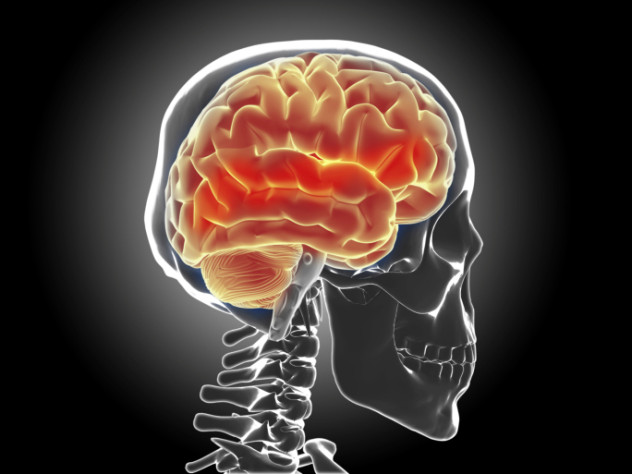
Not all brains are created equal. Human brains have a distinctly wrinkled texture that’s been linked with providing the increased surface area that’s needed for the processing power we require for all that we do every day. Smaller mammals, like mice and rats, have smooth brains—they don’t need the processing power that’s required for things like speech and playing video games. But, for a long time, we didn’t know exactly how all those wrinkles were formed, what dictates how many wrinkles there are, and what shapes they form.
The ridges and wrinkles, called gyri and sulci, form based on a few parameters. The growth of the brain’s gray matter and the thickness of that matter will determine how the brain forms. The human brain contains gray matter and white matter, and researchers have been performing experiment after experiment on similar tissues to try to create a formula in which they can duplicate the appearance of brain wrinkles. There’s a practical reason for this as knowing how wrinkles form will help treat patients suffering from conditions in which the brain forms abnormally.
So far, they’ve discovered that the gray matter and the white matter are similar in stiffness but grow at different rates. Factor in the size of the brain and they can tell just what it’s supposed to look like. The larger the brain, the bigger the proportional difference between the growth rates. As the gray matter grows, the brain, restrained by the white matter, begins to buckle and form ridges that in turn provide more surface area. The brain is also working within certain constraints like making sure certain areas stay connected.
7Gut Bacteria
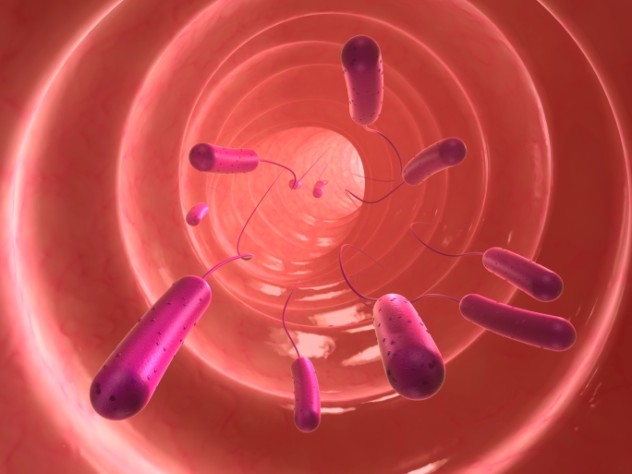
If you watch television, chances are good that you’ve seen commercials for yogurt that advertises the presence of good bacteria. The idea that bacteria can be good is kind of a weird one, and it turns out that our body is literally full of viruses that are also good.
Researchers from the Radbound University Medical Centre have finally found what is likely the most common of viruses in the body, and they’ve named it crAssphage—for reasons that will become disgustingly clear.
Studying the different types of microorganisms that live in a person’s digestive tract presents a pretty unique problem. Most of the organisms won’t grow in a lab environment as they’re pretty particular about living inside of people. So that means a rather secondhand source—stool samples. Researchers are tasked with breaking poop samples down into their most basic components and then rebuilding the DNA sequences to get a complete picture of what’s going on inside the digestive process. Once the DNA is reassembled, then there’s the monumental task of sorting out what belongs to which organism—a long, tedious process that eventually led to the discovery of crAssphage. Technically, the name supposedly comes from the process that built the virus: cross-assembly.
So what do crAssphages do? We’re not entirely sure, but the same researchers that discovered it think that it has something to do with the bacteria that breaks down matter in the stomach. Beyond that, we’re not sure, but they did also find that about 75 percent of the DNA sequences they found in their poop samples couldn’t be classified as any known organism.
6The Re-Discovery Of Part Of The Brain
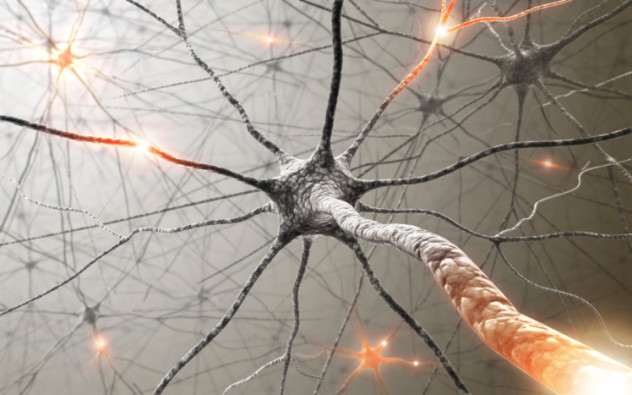
This one’s kind of a discovery and a re-discovery at the same time. When research scientists at the University of Washington’s Institute for Learning and Brain Sciences found a strange bundle of fibers in the MRI scans of every human brain that was examined, they were a bit taken aback. It was very clearly right there on the scans, but it wasn’t in textbooks, atlases, or medical literature. They originally thought they might have found something new until they did a little digging.
Every so often, mention of that particular nerve bundle would pop up in texts. All in all, it was overlooked and ignored, and researchers were able to trace the roots of its strange history all the way back to a scientific squabble.
Theodor Meynert, a neuropathologist studying in the 19th century, published a considerable amount of work stating that nerve bundles in the brain ran horizontally. The problem came when his student, Carl Wernicke, discovered the same bundle that University of Washington researchers had found—a bundle that ran vertically in the brain. Meynert denied the existence of the bundle and refused to publish anything about it since it went against everything he’d already written on the subject.
The omission meant that the bundle of fibers went partially undiscovered for more than a century. Now, it’s been found that the fibers are crucial in the brain’s ability to process visual information and separating the “what” part of the information from the directional and spatial information.
5The Older Someone Gets, The Worse They Smell

Body odor—no one likes it. It turns out that body odor is a uniquely personalized thing. Just what kind of body odor each individual person has is determined by a combination of a certain area of their genetic makeup called the major histocompatibility complex and, somewhat, by what they eat. The basic composition of a person’s body odor remains the same, however, and it’s been suggested that one of the reasons for it is to help us choose a genetically appropriate mate. Change in body odor has also been linked to the development of certain cancers and viral diseases.
But that body odor fingerprint isn’t the only weird thing we’re now discovering about body odor. We’re also finding out that there really is something to the idea that the older someone gets the worse they smell. A substance called 2-Nonenal has now been identified as the reason some people have a faintly greasy odor about them. The substance has only been found in people over the age of 40 and, the older you get, the more of the substance your body produces. Sweat itself is pretty much odorless, but the bacteria that reacts with sweat is what produces the odor. But the steady increase of 2-Nonenal in the body confirms that older people do scientifically have a funny smell.
4The New Knee Ligament

Knee injuries are pretty common but, in spite of all the work that’s been done in figuring out how to reconstruct and fix the delicate and complicated internal structure of the knee, some of the finer points have remained weirdly elusive. In 2013, two Belgian knee specialists were looking into the problem of faulty ACL surgeries. In spite of patients receiving surgery to correct ACL problems, many still suffer from slipping joints and surgeons weren’t entirely sure why it was so complicated.
Now, they’ve found it’s because typical ACL surgery wasn’t repairing the entire problem—they had missed a ligament. The recently observed anterolateral ligament (ALL) was found to be one of the ligaments that typically tears during injury. It wasn’t known so surgeons wouldn’t repair it, making the still-weakened knee prone to shifting even after surgery.
The presence of the ligament was first mentioned by a French surgeon in an 1879 text but, bizarrely, it took us until 2013 to actually find it. Belgian surgeons confirmed its presence in all but one of the 41 knees documented for the study, explaining why up to 20 percent of people with knee injuries never recover fully. While some doctors and surgeons say that the new ligament is clearly a medical breakthrough, others are less impressed.
3Parts Of The Body Age Differently And Our Brains Can Outlive Us

One of the first things we learn about ourselves is how old we are, but it turns out that we’re technically wrong. According to research done at the University of California, different parts of our body age at different rates. And we’re not just talking about slight differences. Some tissues can appear years older than the rest of the body or the age that the calendar says that we are. Female breast tissue, for example, typically appears about three years older than we think it should be; that’s now thought to be one reason why breast cancer is so prevalent.
The different patterns of aging were discovered when researchers viewed different body tissues through the lens of methylation patterns. Methylation patterns refer to the different chemical groupings within a tissue; the more methylated a tissue is, the older it is. Cancerous tissues can appear to be up to 36 years older than our calendar age.
Because science always has to take things just one step further, it’s now being suggested that our brains can actually outlive us. Researchers at the University of Pavia in Italy are working on prolonging the human lifespan. But crucial to that is whether or not people will be able to retain their quality of life if they’re living longer. They think that the answer just might be yes.
For their research, they took neurons from mice and implanted them into rat fetuses. Rats typically have twice the lifespan of mice, allowing scientists to get a look at how long the mice neurons were capable of living without the physical restraints of the mouse body. Once the rats died, their brains were examined; the mouse neurons were alive and well and functioning properly which suggests to researchers that it’s our bodies that are the problem, not our brains.
2Our Bodies On Meditation

The idea of mindful meditation as a way to relax has been around for centuries. It’s only relatively recently that meditation has made the jump from a spiritual technique to a more secular and scientific one. And it’s even more recently that we’ve realized just what kind of physical effect meditation has on the body.
Regular meditation over a period of weeks has long been said to help a person control their stress levels, thoughts, and reactions to those thoughts. MRI scans show that’s precisely what it’s doing. After an eight-week course in which meditation is practiced regularly, the amount of gray matter in parts of the brain—specifically the amygdala—decreases. This part of the brain is responsible for the fight-or-flight instinct that governs our response to threats.
The connections between the amygdala and the rest of the brain also start to decrease. As the connections with the amygdala shrink, the pre-frontal cortex (which governs our conscious decision-making processes) expands which means we’re more focused on making thoughtful and rational decisions than relying on our gut reaction to panic. While there are a number of different things that can increase the size of our decision-making brain parts, meditation is unique in that it couples this focus with a reduction in our fight-or-flight response system.
That all means that by meditating frequently we’re re-wiring our brains to rely more on our sound and rational decision-making capabilities than our instinctual responses. It’s also making us more able to deal with pain which explains why those who meditate frequently have a higher tolerance for pain and report fewer symptoms when they contract some sort of disease or disorder. Feeling “Zen” isn’t just a hippie-esque method of dealing with stress, it’s training our minds to respond differently to stimuli in a precise physical way.
1The On-Off Switch For Consciousness
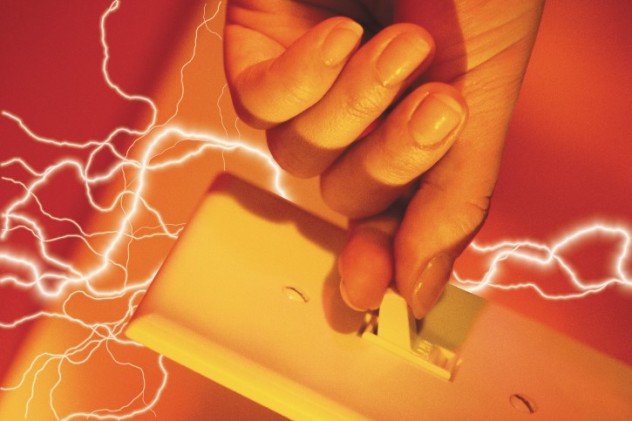
Science and religion have long debated just where human consciousness comes from. Although the research in this field is pretty new and understandably slow-moving, scientists from George Washington University think that they’ve found the on-off switch for the human brain.
It’s called the claustrum. Researchers were experimenting with a single patient who suffered from epilepsy and began using deep brain electrodes to stimulate parts of her brain and record electrical activity in an attempt to figure out what parts of her brain were malfunctioning and causing her seizures. Stimulation of the claustrum—which had never been done before—quite literally turned her consciousness on and off. The woman stopped responding to outside stimuli and, as soon as the activity around her claustrum was removed, she regained consciousness without remembering ever having lost it.
While researchers aren’t counting their chickens yet, they are beginning to think about what this means for the functionality of that part of the brain. They think that the claustrum acts to bring together all the other information in the brain. It assembles sight, smell, taste, thoughts, and memories—all the bits in the brain that make us who we are.
The consequences of this research can be staggering. If the claustrum is responsible for giving humans their defining consciousness, that means we’re one step closer to recreating it in artificial brains. In theory, we would be able to reverse engineer what we already have into something we’ll be able to create. We’ll also be able to define consciousness much more precisely and that will extend into controversial hot-button topics such as when a human fetus develops a consciousness and whether or not animals have the same consciousness that humans do.







